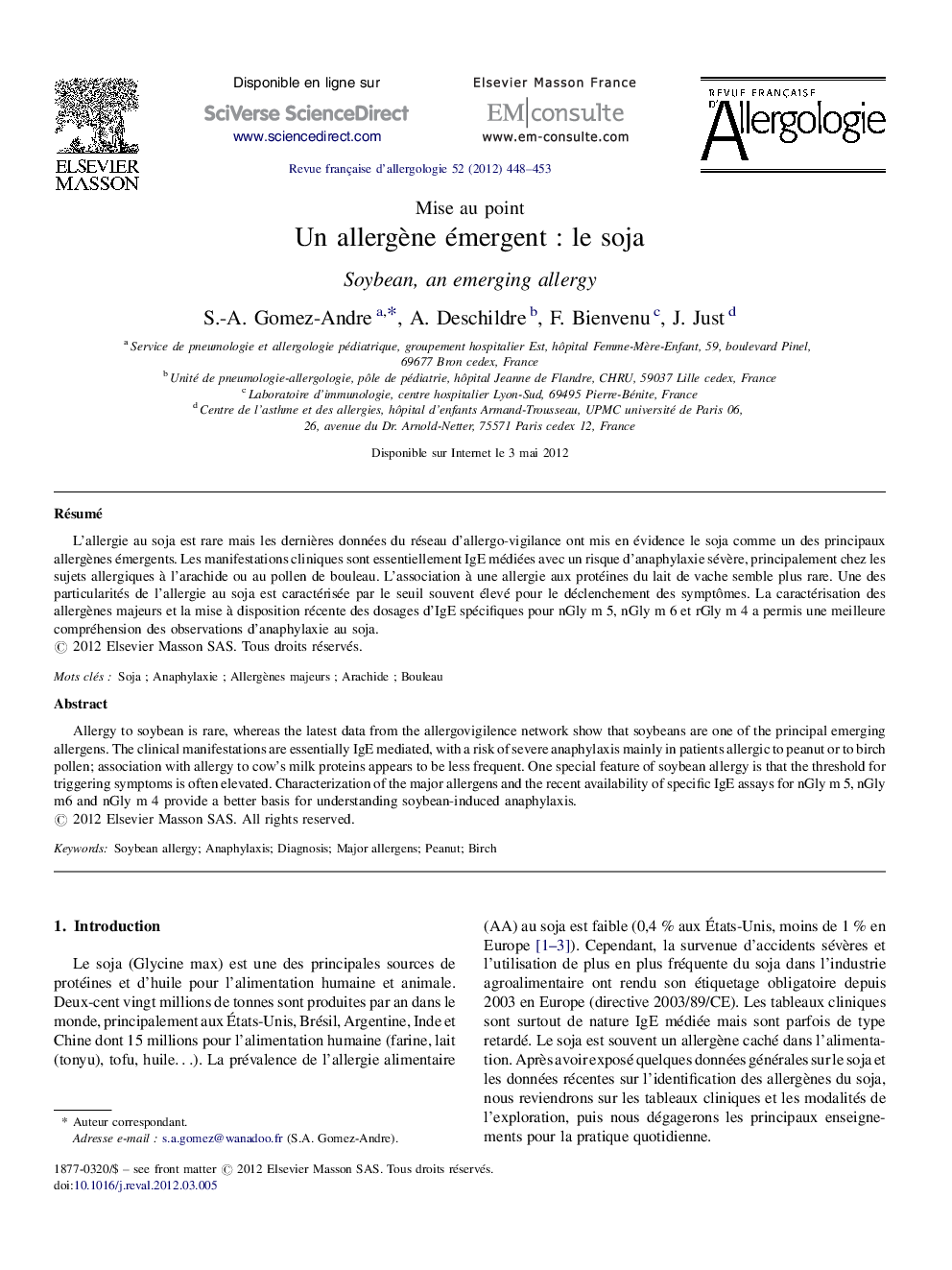| Article ID | Journal | Published Year | Pages | File Type |
|---|---|---|---|---|
| 3386518 | Revue Française d'Allergologie | 2012 | 6 Pages |
RésuméL’allergie au soja est rare mais les dernières données du réseau d’allergo-vigilance ont mis en évidence le soja comme un des principaux allergènes émergents. Les manifestations cliniques sont essentiellement IgE médiées avec un risque d’anaphylaxie sévère, principalement chez les sujets allergiques à l’arachide ou au pollen de bouleau. L’association à une allergie aux protéines du lait de vache semble plus rare. Une des particularités de l’allergie au soja est caractérisée par le seuil souvent élevé pour le déclenchement des symptômes. La caractérisation des allergènes majeurs et la mise à disposition récente des dosages d’IgE spécifiques pour nGly m 5, nGly m 6 et rGly m 4 a permis une meilleure compréhension des observations d’anaphylaxie au soja.
Allergy to soybean is rare, whereas the latest data from the allergovigilence network show that soybeans are one of the principal emerging allergens. The clinical manifestations are essentially IgE mediated, with a risk of severe anaphylaxis mainly in patients allergic to peanut or to birch pollen; association with allergy to cow's milk proteins appears to be less frequent. One special feature of soybean allergy is that the threshold for triggering symptoms is often elevated. Characterization of the major allergens and the recent availability of specific IgE assays for nGly m 5, nGly m6 and nGly m 4 provide a better basis for understanding soybean-induced anaphylaxis.
